I don’t remember seeing so many details in any of my photographs taken in the last 20+ yrs. Actually, I do not remember my eyes watering at the myriad of lines, angles, dots and small details, such as the buildings made from Lego. One could say this is a geometrical nightmare, if one would be willing to study them Lego models in real life. My head hurts, only by looking at the photographs. Joking, of course.
But the truth of the matter is that, indeed, the Lego blocks are creating a sense of a razor sharp geometry, changing the way one feels inside a room. Indeed, it “sharpens” the experience of visiting the Lego House or the Lego Park in its birth town, Billund (Denmark). It somehow modified the feeling of one’s presence indoors.
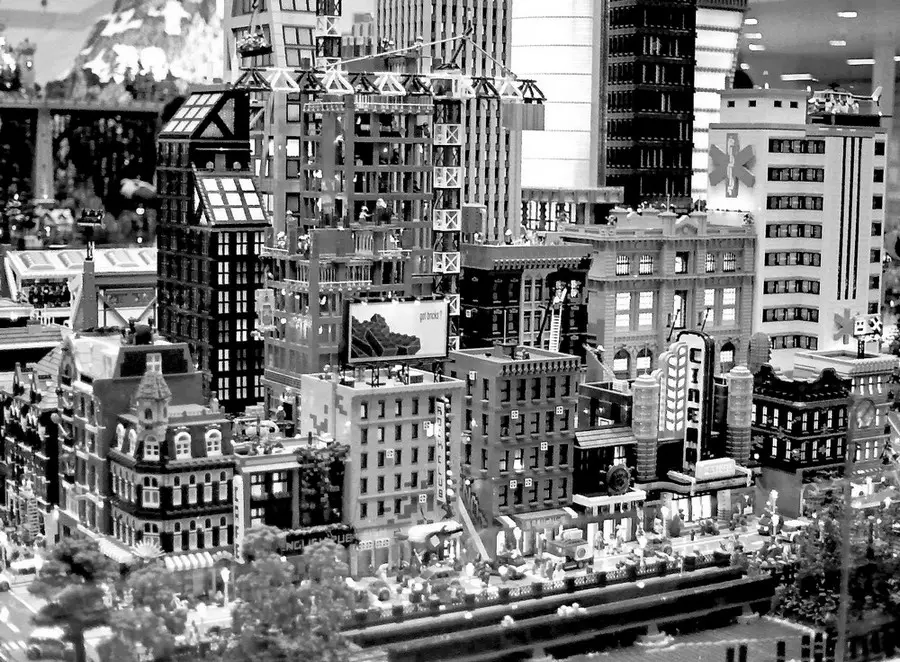
Of course, that “feeling” is somehow perceived differently if studying the Lego models outside, in the open space. It does bring the viewer closer to the normal, but even so…the multitude of details creates a sense of unrest. The eye sees them, and cannot take all in. Overwhelming and overlapping, resulting a disconnection from the real space, making the beholder somehow feeling a bit strange.
Of course, on top of this, the brain has to accommodate the real life buildings and whatnot with the similar, but smaller, much smaller, models made from these coloured and funny bricks. When seeing an entire village spread on a mere 20 sqm piece of concrete, the brain takes a bit of a holiday, not leaving a note where it goes to (and no, it’s not the sunny beaches of Understanding Symmetry island).
One stares at the small houses, minute trains, little cows and tiny people, trying to achieve a sense of understanding that no, he is not Gulliver and this is not Lilliput. And then, one looks again, and again, and here comes the headache.
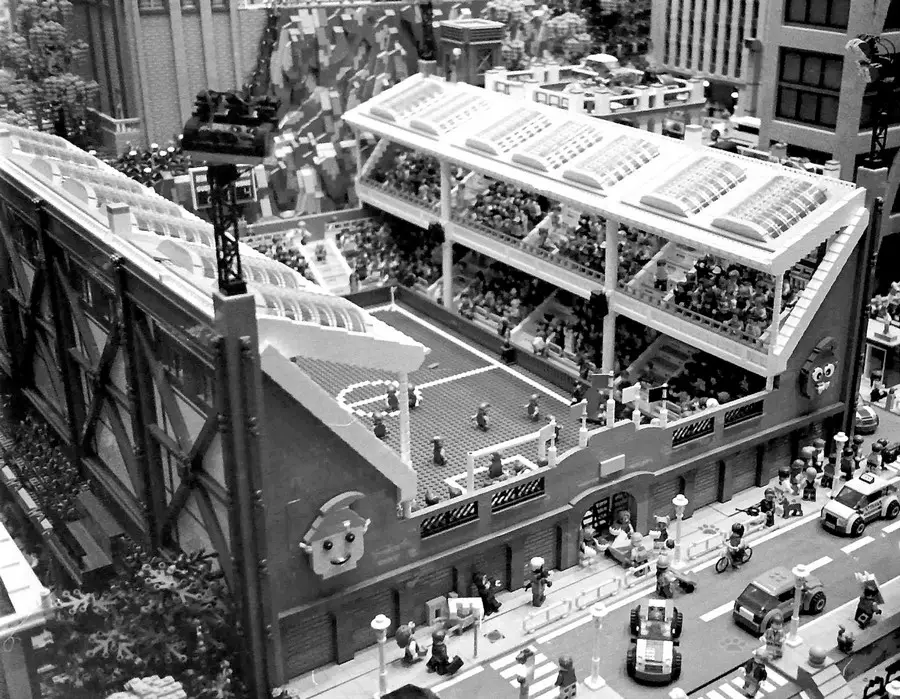
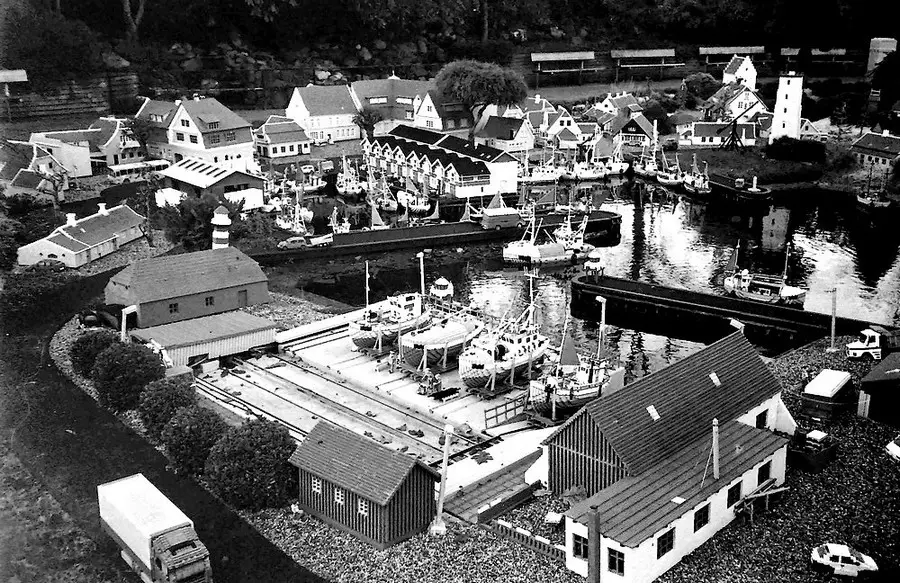
The brain tries to process the information and it does this with a frustration; it cannot decide what is more important to process, which exactly is the main detail, what to go back to, what to check in conjunction with what. It barely can take the general picture in, and so it resolves just about to determine what the heck that model represents and be half satisfied with that. It gladly changes the perspective and quickly moves to the next one.
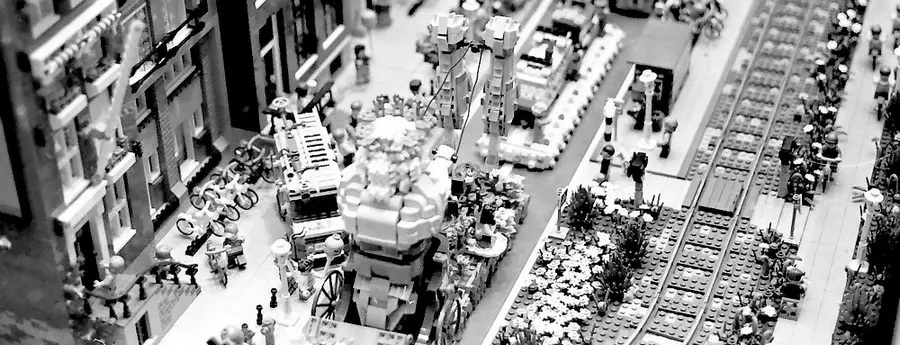
Anyways, these models are a marvel to look at and see for yourself. True, they humble the beholder, for I get tired by just imagining what sort of efforts took to imagine, build and organize this sort of presentation, at such a grand scale. Imagine the dedication and the sheer number of hours needed to build this.
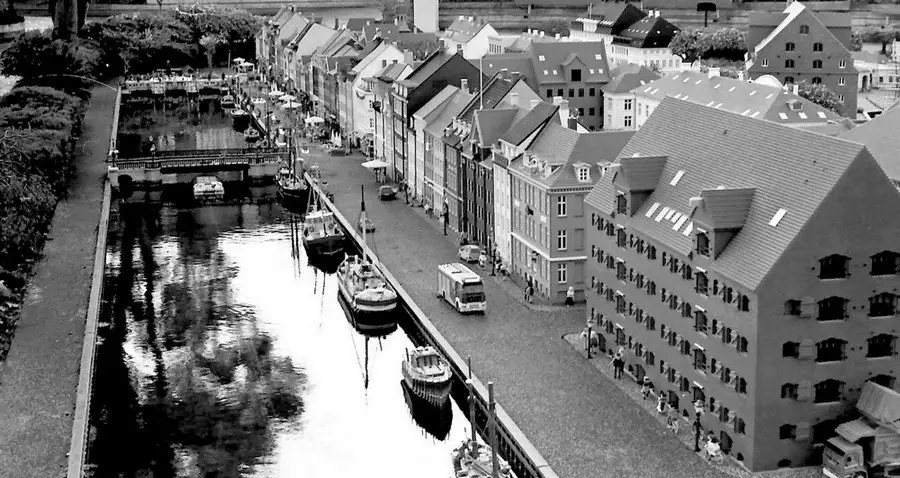
Just a side note: if you’ll ever envisage or plan to travel there, take at least 6 films with you, of which 2 at least should be 400 asa, you’ll need this speed. And if you go in the summer, when plenty of sun, you’ll also need some slow speed, for the most models include white parts in a large number.
Rant over, sorry to keep you reading this. Perhaps the most “sane” photograph taken in those days at Legoland is this one here. As a famous Pratchett’s character would put it. “better a duck than a quack”.
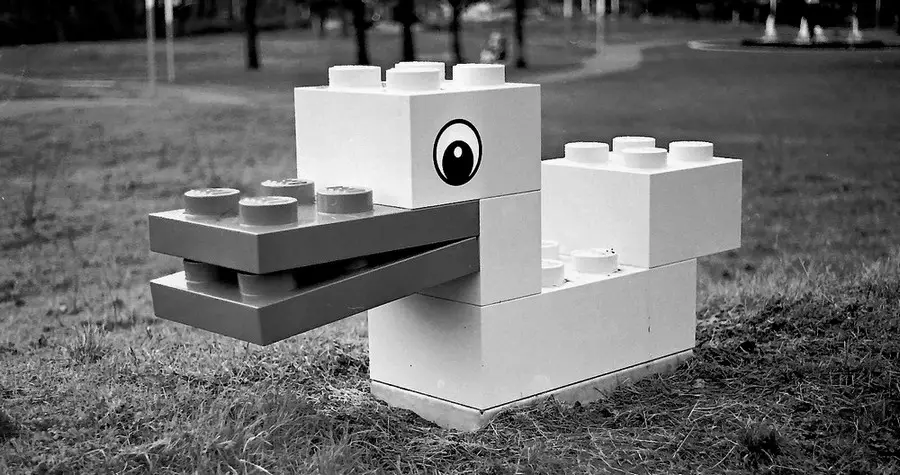
Olympus OM1 with Fomapan 100@50.
Share this post:
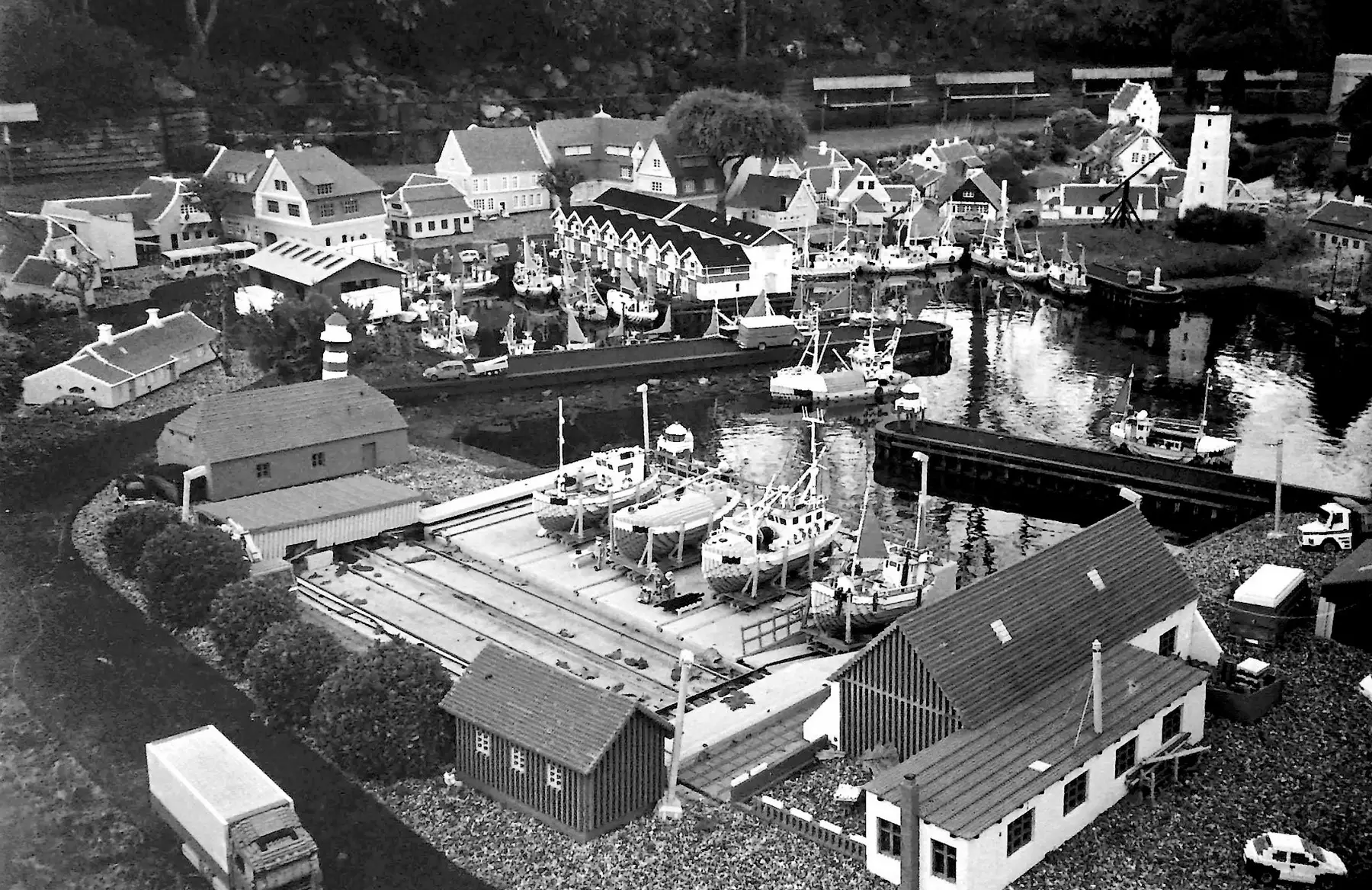








Comments
Gus on Legoland Denmark – lines, dots and angles
Comment posted: 28/08/2023
I think black & white was a smart choice. If I ever visit a legoland again I'm taking a tripod and a shift lens!